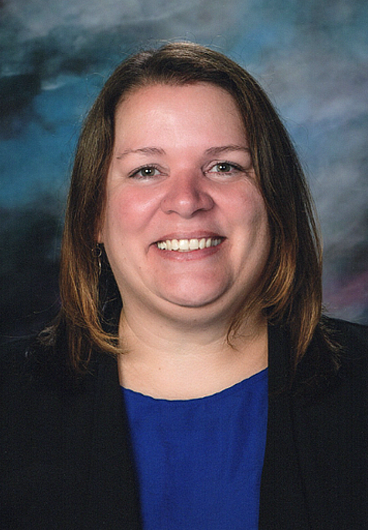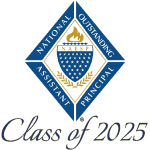
Desiree Olsen
Edgemont Elementary School
Provo, Utah
desireeo@provo.edu
Best Practices
1) 21st Century Learning: During my three years as Assistant Principal at Edgemont, we have embraced STEM and Arts integration as a best practice to boost student achievement, school culture, and community engagement. I have led the school community in self-assessing where we are at in our practice, clarifying our vision and goals, and creating a 5-year sustainability plan.
The most effective best practice that has evolved out of the STEM and Arts focus is the deep, collaborative integration of our grade-level teams and specialty teachers to create meaningful connections across content areas. Teachers have received training from the BTS Arts grant and a research partnership with BYU Engineering professors.
As we have implemented STEM and Arts integration we have seen student growth and achievement rise, especially in our ML students and the lowest 25% academically. We have also seen students strengthen their resilience and confidence as they work through engineering projects or make a connection in coding that helps them better understand a literacy strategy.
One of the reasons I was hired at Edgemont as the assistant principal was to strengthen and sustain our STEM and Arts programs. My principal and I knew that for this best practice to be effective and give our students what they need in our rapidly changing society we needed to make a clear plan, communicate it well, and empower the staff to take ownership of it. I had led the staff at Canyon Crest through the process of becoming a Platinum STEM-Designated school resulting in these things.
In my second year as the assistant principal of Edgemont, I led the staff through the process of self-assessing using data and evidence. This was done through our building leadership team, with grade-level leaders working with their teams, bringing the information to our leadership team meetings, and then returning it to grade-level teams for feedback. This process led to identifying our strengths and weaknesses and using those to create a STEM vision, goals, and a specific 5-year plan to sustain and build upon our best practices in STEM and the Arts already happening at Edgemont.
Since becoming a Platinum STEM-designated school teachers are seeking out more opportunities to integrate, collaborate, and share their ideas. There are more efforts toward alignment across grade levels. Our teachers have more confidence and are willing to try new things. Students take more ownership of their learning.
There is excitement about STEM and the Arts, and learning in general at Edgemont as the vision and plan are becoming something that we talk about constantly and is beginning to live in the daily culture of Edgemont. Parents and community members are becoming more informed about exactly what it means to be a STEM school and how that translates to what their students are doing every day in school. In November 2024, Edgemont was named a National Blue Ribbon School and our best practice in integrating STEM and the Arts is one of the key factors we attribute to our achievement.
2) Assistant Principal’s Role as Instructional Leader: Edgemont Elementary uses the process of working in professional learning communities to ensure student achievement better than any school I have worked in. This best practice is the foundation upon which everything else we do is built. The better we do the work of PLCs, the more effective we are in all areas because the systems are in place and the right people are doing the right work based on evidence of what is needed. Of course, Edgemont still has room for much improvement because the work of PLCs is never finished and the needs are always changing.
During my three years as Assistant Principal at Edgemont, I have worked collaboratively with my principal to bring more clarity, communication, understanding, and accountability to our PLC process. We provide training in the PLC process for our teachers every year, and we have created a schedule with common planning time and time set aside for 90-minute grade-level meetings once a week as well as student success team meetings where teachers can sign up to discuss a specific student with the school-wide team, Special Education meetings weekly, building leadership meetings bi-monthly, and French team meetings monthly. Our specialty teachers have a rotating schedule to visit grade-level meetings to discuss integration and also to reach out to other specialty teachers in the area. PLCs are not a meeting or an event, they are a framework and a process, but these scheduled meetings allow the time needed for all to engage meaningfully and effectively in the process.
We begin the year at Edgemont giving each grade-level team a sub for a day so they can collaborate to use the state standards to identify common essentials and begin to create common assessments. My principal and I use this time to train teachers and guide them through the process so they are then empowered to do it on their own. We also use this time to guide them through using beginning-of-year data to create groups for initial Tier 2 instruction and identify which teacher will teach which group.
Later in the year we meet with each grade level for data dives. Teachers identify students in the zone of opportunity to help grow and what all will intentionally do to help. Teachers also use this time to evaluate how all tiers of instruction are going and calibrate.
The heart of our PLC work is our building leadership team. This is the team through which all major decisions are made in accordance with our vision, mission, common commitments and goals. We strive to have feedback back and forth with grade-level teams sending their feedback to the team and the team taking it back to them so all are involved.
This year Edgemont was named a National Blue Ribbon school and our strong focus on the PLC process is a critical component of this achievement. I look forward to this year as we are planning to become a PLC model school.


